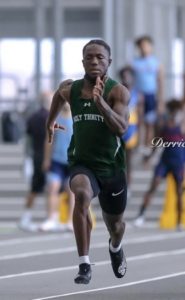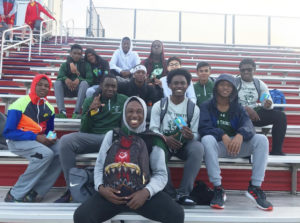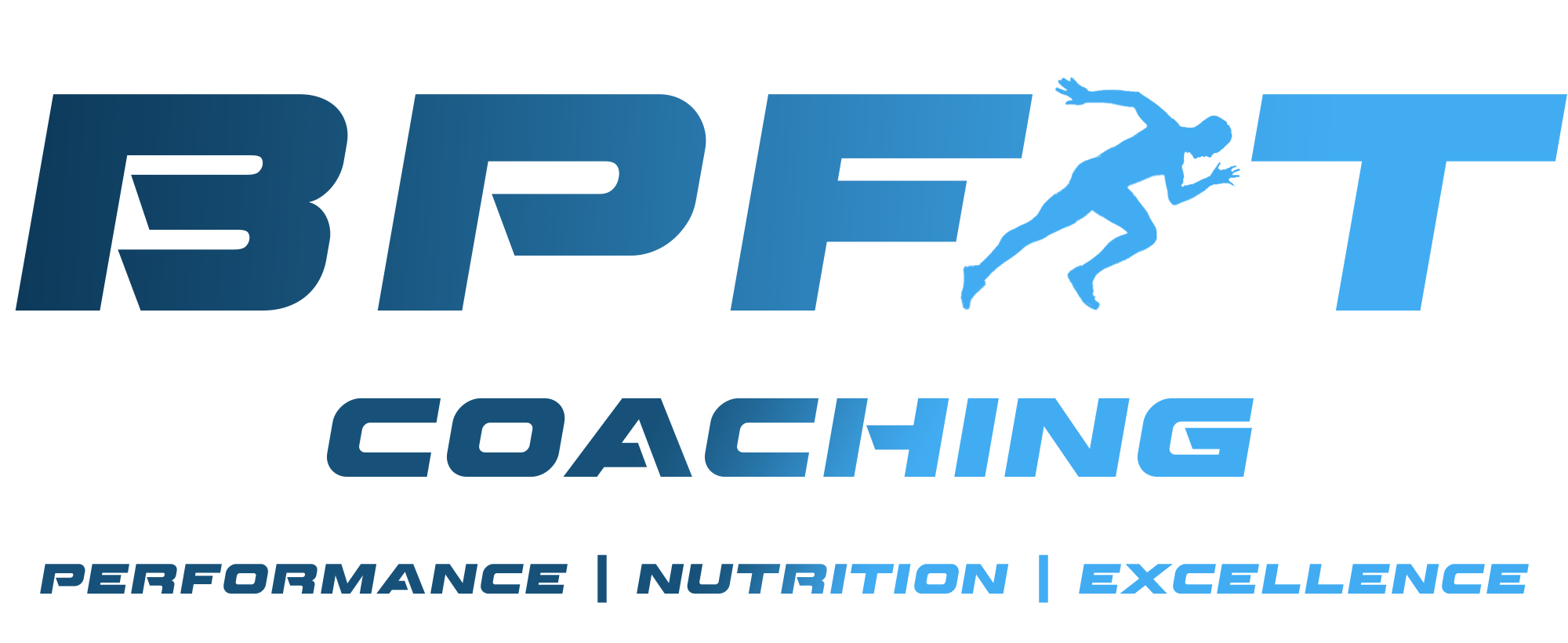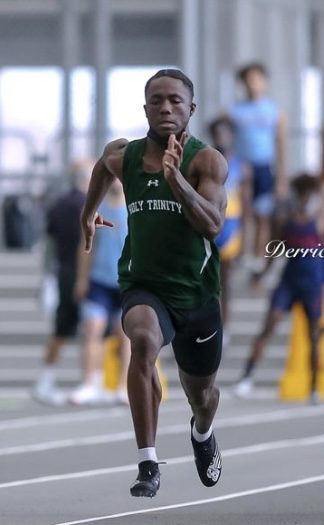5 Guiding Principles
Training Speed as a High School Track Coach
By Eugenia Bradshaw
I’ve been coaching high school track and field for 16 years. One of the most important things I’ve learned over the years is that I want to train my sprinters in a way that gets them faster but also keeps them healthy—the path of least resistance. The best way to do that is by prioritizing their acceleration/speed training with the appropriate dosing. Here’s the problem: if you have ever coached in a high school setting there are always interruptions.
You can have your training plan laid out for the entire season but count on it getting disrupted by weather, (especially in the northeast!), kids getting sick, missed practices, family obligations and the list goes on. It comes with the territory, so what’s a coach to do? Number one is to understand the principles of speed/acceleration training and why it’s important. If you know what’s inside the box really well you can think outside the box.
Below are 5 guiding principles that have helped me over the years:
- Mechanics are important
- Quality over quantity
- Endurance is not speed
- All athletes are different
- If they don’t use it, they’ll lose it
1). Mechanics Are Important

According to speed expert Dr. Ken Clark: “Elite speed athletes have a running pattern that is distinct. Our data indicate the fastest sprinters each have identified the same solution for maximizing speed, which strongly implies that when you put the physics and the biology together, there’s only one way to sprint really fast”.
Elite sprinters have good mechanics, that’s part of the reason why they’re so fast. They’re able to strike the ground like a hammer hitting a nail, the force is fast and furious. They’re able to wind up really well like coccking a hammer then strike and slam it down.
If an athlete can’t apply a significant amount of force into the ground, sprinting fast will be difficult. An elite sprinter can generate 3-5x’s their body weight of force into the ground! If you’ve ever coached fast sprinters, you can see how they are able to push down and back during acceleration and punch the ground during max velocity. Training athletes to at least get into the optimal position to sprint is like giving them the right ingredients to a recipe.
No two athletes move or learn the same—as a result, coaching athletes to sprint faster may be more self-organizing for some, and less for others. Regardless, a training model based on facts will increase the learning curve, improve efficiency, and reduce injury factors. Sprinting is a skill, and we can’t just leave it up to athletes to self-organize—they need instruction and coaching.
Positions we are always working toward…
- Upright posture with the torso and the hips neutral.
- Minimal swing of the thigh behind the body after toe-off ( too much backside mechanics limits the lift of the thigh in frontside mechanics)
- Maximal lift of the thigh in front of the body during the forward recovery phase.
- Aggressive strike towards the ground at the end of the swing phase.
- Stiff ground contact on the ball of the foot.
- Cues for top end speed: Bounce, Scissor, Strike.
“A drill is only as good as its cue”
2).Quality Over Quantity
Factors to keep in mind when training for speed:
- The time/distance an athlete runs in a training session.
- The rest time between sprint efforts.
- The recovery time between speed training sessions.
When the focus of training is acceleration or max velocity, it’s considered quality training. For it to be quality, the volume must be low. Speed training taxes the Central Nervous System and it can only be taxed for shorter periods for it to recover and perform properly. More is not better when it comes to speed, and in my experience most athletes want to get back on the line and go and don’t understand that defeats the purpose—this is where putting a watch on it is important.
If athletes are tunable to hit the times you have prescribed for them and they are increasing with each rep, shut them down. When going into practice I always have a range of reps. For example, if the theme of the training session is top end speed, 5x50m with 5’ rest on the turn, by rep 4 the athlete is breaking down, shut them down. This is no longer quality work and the risk of injury increases. Know what the focus of the training session is and if you’re not achieving it, it’s a waste of time.
High CNS training days should be followed by low CNS training days: it’s best to allow at least 48 and sometimes 72 hours of recovery between sessions. When going into
The other thing to keep in mind is Key Performance Indicators. If an athlete seems to be very tired, unable to concentrate, performing sloppy drills, it’s probably not the best idea to have them do training that would further tax their CNS. Having them practice just to do it won’t accomplish anything. As the coach, the more experience you have the easier it is to make this call.
Some guidelines when focusing on quality:
- Training speed requires approximately 1min recovery/10m between reps.
- Volume for Acceleration/Speed 50-300m (flying start distance not included-*consider athletes training age when deciding on volume).
- If drop off in performance or technical form, the session is ended.
- The body will be unable to run >95-98% of max without appropriate recovery.
- More is not better with speed training because you risk injury.
3).Endurance Is Not Speed
https://bpfit.com/wp-content/uploads/2022/04/joined_video_07e84fc8090943e7917846d54813a023-1.mp4
When training a program for my athletes, keep in mind energy systems. We don’t have to be physiologists, but it is our responsibility to know the goal of the type of training we are giving them.
Think about it like this:
- Alactic: main energy provider for short sprints ~10 seconds, the energy system used when you want to move FAST and be POWERFUL!
- Anaerobic (Lactic): move kind of fast for 30-60 seconds, such as running a 200-400m.
- Aerobic: “I want to move slower for long periods of time” or endurance training.
Each of the energy systems has specific power (how much output can the athlete produce) and capacity (how long the athlete can sustain that output). During training, energy systems don’t just turn on and off like a switch—it’s more like turning a dial.
Endurance training is not going to help athletes get fast. If we first look at the body type of a typical endurance athlete, they are completely different then a sprinter. Athletes’ bodies become what they are because of how they train. A gymnast, an Olympic lifter, and a sprinter have significant muscle mass because they train mostly for power and speed. A 1600m runner or triathlete has a different body type for a reason.
When our goal is to train for speed and power, endurance training won’t do much except put excess stress on their joints, increase the slow twitch fibers, and change their running mechanics. Would you tell a football player to run 3 miles/day so they have endurance for a game? There are, however, different types of speed endurance, special endurance 1&2, and tempo runs have a place programming depending on what the goal is—at the end of the day know your why.
Keep in mind…
- If your goal is to be fast, know the difference between sprinting and running.
- Mechanics differ during running distance
Short Sprints 55m-200m, Long Sprints 200m-400m* This is not an endurance event.
4).All Athletes are Different

Understanding and learning how to deal with differences, especially in a high school setting, is extremely important, these are teenagers not little adults. During these formative high school years there’re many physical and psychological changes. Teenagers morph from insecure freshmen into confident seniors with all kinds of in-between.
Regardless of the stage they’re in, hold them accountable, teach them the importance of respect, trust the process, routine, and understand that success doesn’t come overnight, it sets up the to become successful people and athletes. This is how we create a Team Culture….more about that in my next article!
Keep in mind when teaching your athletes something new that they all learn differently. You can explain something to two equally talented sprinters, and one will get it right away and the other may need a physical demonstration. Some athletes are visual, some are auditory and some need both, covering all bases when teaching.
Every athlete deserves to be treated with respect and in turn they will respect you. As a coach, it’s our responsibility to get the best out of our athletes and to do this you have to realize no two are the same.
5). If They Don’t Use It, They’ll Lose It
When you train athletes for speed properly, they get faster. If you take the speed training out they will lose speed, it’s that simple. There needs to be a speed stimulus in their program.
When you start your next season, think about what your end goal is and make sure your training is designed to meet that goal. Understand it’s high school and there will be plenty of times when you can’t get your training in the way you want because of all the disruptions. It’s high school and it goes with the territory, we do the best we can with what we have…HAPPY COACHING!
References
- Clark, K. P., Ryan, L. J., & Weyand, P. G. (2014). “Foot speed, foot-strike and footwear: linking gait mechanics and running ground reaction forces.” Journal of Experimental Biology, 217(12), 2037-2040.
- Strengthcoach.com.
- “The Training and Development of Elite Sprinters.” Sports Medicine.

